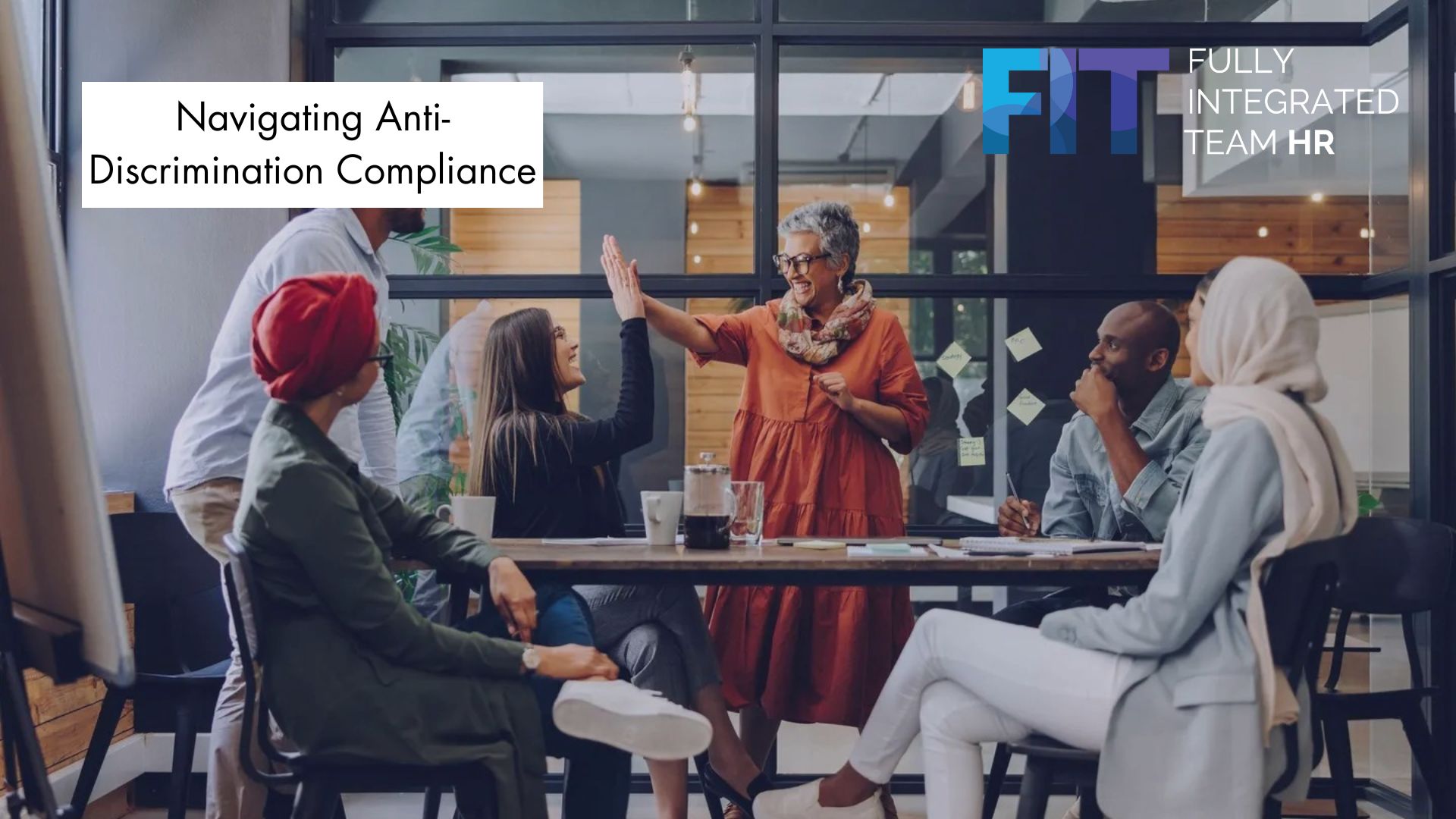By Bill Swan, Principal Consultant
Table of Contents
Employers across the United States, whether large corporations or small businesses, have a responsibility to prevent workplace discrimination. But understanding what that truly means and ensuring compliance? That’s where things get tricky.
At FIT HR, we know that compliance isn’t just about legal checkboxes. It’s about creating a workplace where fairness isn’t just required, it’s expected. This article is designed to help employers break through the confusion, understand key laws, and take practical steps to protect their business and their people.
Understanding the Legal Foundations
The framework for workplace anti-discrimination laws starts at the federal level. While state laws may expand protections, they cannot offer less than federal law mandates.
The framework for workplace anti-discrimination laws starts at the federal level. While state laws may expand protections, they cannot offer less than federal law mandates.
Key Federal Anti-Discrimination Laws
Here are the laws every employer should be familiar and comply with:
- Title VII of the Civil Rights Act -Protects employees from discrimination based on race, color, religion, sex (including pregnancy, sexual orientation, and gender identity), and national origin. This law applies to employers with 15 or more employees in the public or private sector.
- Age Discrimination in Employment Act (ADEA) – Prevents discrimination against employees 40 and older in hiring, promotions, and layoffs. Law applies to employers with 20 or more employees.
- Americans with Disabilities Act (ADA) – Requires employers to provide reasonable accommodations for employees with disabilities and prevents discrimination based on disability status.
- Equal Pay Act (EPA) – Ensures equal pay for equal work, regardless of gender.
While federal laws set the baseline for workplace protections, many states go even further, offering broader rights for employees. If your business operates in multiple states, you’ll need to stay on top of state-specific requirements to ensure compliance across your workforce.
Key Takeaway – State laws can’t offer less protection than federal law, but they can expand on it. When state and federal laws conflict, federal law wins thanks to the Supremacy Clause in the U.S. Constitution. For employers, this means compliance isn’t one-size-fits-all. Understanding both federal and state regulations is key to protecting your business and your people.
How Are These Laws Enforced?
The Equal Employment Opportunity Commission (EEOC) enforces the federal anti-discrimination laws. A complaint can be filed with the EEOC online or by calling. Employees can file complaints online or by phone, and if an employer is found in violation, the consequences can include:
- Back pay and financial compensation
- Retroactive retirement contributions
- Legal fees and court costs
- Public scrutiny & reputational damage
Key Components of an Effective Equal Employment Opportunity Policy
A well-defined Equal Employment Opportunity (EEO) policy is essential for preventing workplace discrimination and ensuring compliance. It should include the following core elements:
A clearly written policy that defines the organization’s commitment to equal opportunity and non-discrimination. It should outline expectations for fair treatment, detail prohibited behaviors (such as discrimination, harassment, and retaliation), and establish a clear stance on compliance.
A transparent complaint procedure that ensures employees have a fair and accessible way to report concerns. This process should:
- Emphasize confidentiality and non-retaliation
- Define clear steps for reporting, investigating, and resolving complaints
- Ensure a consistent and timely response to all reports
Regular training for managers and employees is necessary to keep anti-discrimination policies top of mind. This should include training on unconscious bias, workplace respect, and compliance expectations, especially for those in leadership roles.
Proactive compliance efforts, such as self-audits and periodic reviews, help identify and address risks before they become legal issues. Ensuring policies are applied consistently across the organization reduces the likelihood of disputes.
Thorough record-keeping is also critical. Proper documentation of policies, complaints, investigations, and resolutions not only supports compliance but also protects the organization in case of an EEOC inquiry or legal challenge.
While having an EEO policy in place is important, actively enforcing and reinforcing it is what truly makes a difference. When issues arise, they must be taken seriously, investigated promptly, and properly documented. A strong EEO policy isn’t just about following the law, it’s about creating a workplace culture of fairness, accountability, and respect.
Best Practices for Employers
Creating a workplace culture that prioritizes diversity, inclusion, and fairness isn’t just a nice-to-have, it’s essential. Without it, compliance becomes a challenge, and employees can quickly recognize when leadership’s actions don’t match company policies.
Leaders, managers, and supervisors set the tone. They must model respectful and inclusive behavior in everything they do, what they say, how they communicate, and how they make decisions. A policy means little if leadership doesn’t actively support and reinforce it. Employees notice inconsistencies, even if they don’t speak up about them.
Beyond culture, staying informed about evolving laws and regulations is key. Employment laws shift, and compliance requires ongoing attention. Your legal counsel, HR team, and FIT HR are valuable resources to help navigate these changes.
If your organization needs guidance on anti-discrimination compliance, training, or policy development, FIT HR is here to help. Contact us

